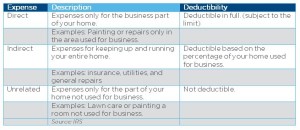3 Strategies To Help With Your Tax Fears
March 15, 2017I’m going to go out on a limb and say that tax time is pretty much everyone’s least favorite time of year. Even for me, a CPA and former tax preparer – I dread the process of digging up all our information and organizing it in order to complete our taxes and I especially dread the verdict of how much we’ll owe. It’s no surprise that nearly 1/3rd of all tax returns were filed in the last two weeks of the 2015 tax deadline. Whether it’s due to fear, procrastination or waiting on that last bit of information, tax time is stressful. My colleague Teig Stanley offers the top 3 fears that we help people address and a strategy to overcome each of them:
Fear #1: It’s Confusing/Overwhelming
Your strategy: Overcome this barrier by writing a short, step-by-step plan to file. Set a date and time well in advance of the deadline (April 18th this year) when you will start your tax filing and decide if you are going to use a tax preparer or do your taxes yourself.
Then, organize your documents. Use a tax preparation checklist or ask your tax preparer for one and start making an inventory of the documents you’ve saved. If you’re like most, almost all of your documents are in paper form, so make these files for them:
- Income
- Charitable contributions
- Taxes paid
- Receipts
- Miscellaneous
Fear #2: I Might Not Get a Refund
Your strategy: If you’re afraid you’ll owe, the sooner you know the better. Even if you file your taxes in February, that balance isn’t due until April 18th so go ahead and file as early as possible and use the extra time to make a plan to pay what you owe. If it’s more than you can afford, you can contact the IRS to arrange a payment plan or borrow from another source. Just be sure to compare interest rates to get the lowest possible cost.
If you’ll be receiving a refund – great! Get those tax returns in quickly to receive the money sooner. Asking for direct deposit makes it even faster. If that refund is large, consider filing a new W-4 form with your payroll department to increase your exemptions and take more money home in your paycheck throughout the year.
Fear #3: What If I Get Audited
Your strategy: Statistically, less than 1% of tax returns for those reporting under $200,000 in income (and more than $0) are chosen for an audit by the IRS each year. If you are concerned about an audit, work with a professional tax preparer who will agree in writing to provide audit support if one is requested.
The bottom line is that while tax time is no fun for anyone, it’s not something you should be fearing. If you haven’t already, get down to it and get it done. If you’re going it alone in preparing your own taxes and need help, contact your tax software provider or search for free tax prep help through local community organizations and national non-profits. You may even qualify for free preparation if you have a moderate to low income.
Kelley Long is a resident financial planner with Financial Finesse, the leading provider of unbiased workplace financial wellness programs in the US. For more posts by Kelley or to sign up to have her weekly post delivered to your inbox each Wednesday, please visit the main blog page and sign up today.





